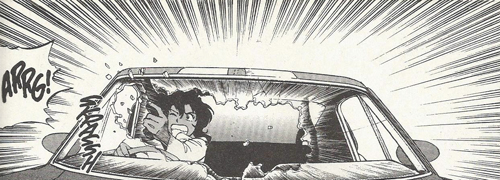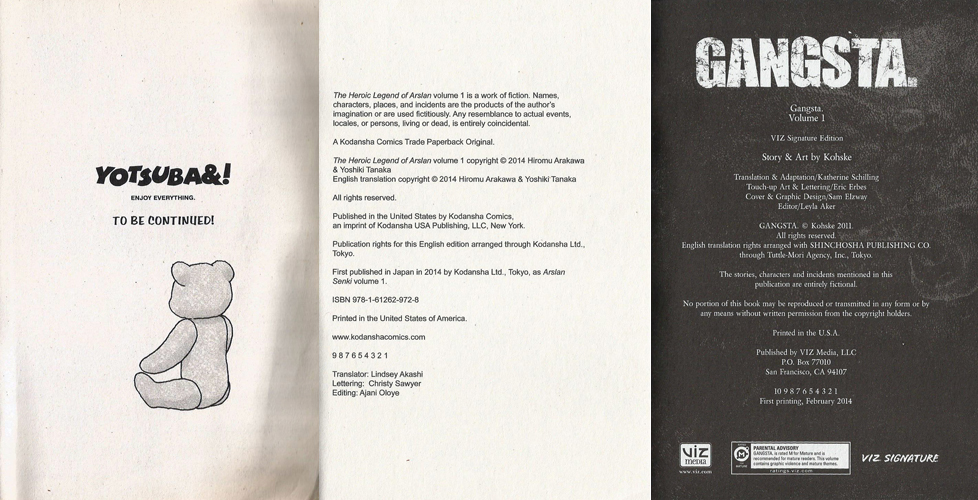Picture, if you will, a fresh-faced fan walking into a comic book store on Free Comic Book Day. She picks up a haul of titles that look interesting. Hey, it’s free! Perfect opportunity to try something new out, right? Included in that haul is a sampler put out by a North American manga publisher. How awesome! She’s been meaning to give manga a try, but there are so many titles and she didn’t know where to begin. A sampler’s perfect for her needs. She can test drive a few manga series and see if one tickles her fancy.
Now, this fan is a long-time reader of the major superhero titles put out by the Big 2. She’s weathered crossover events and seen multiple universe reboots. This is not her first sequential art rodeo. She’s not new to comic books. She is, however, new to manga.
How do you think she picks up that sampler? At which end does she begin to read?
This is a real life anecdote. One of our WWAC staff writers encountered this dilemma when she picked up a manga sampler during FCBD. She was confused about which side of the book was the beginning. There were no notes in the sampler to guide her. As a result, she had to post photos so the rest of us could tell her.
To give a bit of context: Manga, like most Japanese texts, is originally printed from right to left. So not only do you read a page from right to left, a volume begins on what we would consider the back of an English-language text. In the 1990s, North American publishers mirror-imaged manga so that they would be read from left to right. This occasionally led to some awkward continuity errors and backwards reading text.

 Say what you will about TOKYOPOP – and there’s a lot to say – they did revolutionize the English-language market by ceasing the practice of mirror-imaging in the early 2000s. Their meteoric rise forced the other English-language manga publishers to adapt in order to remain competitive. But the one thing I remember most about TOKYOPOP’s “100% Authentic Manga” is that they included in the back – what English-language readers would consider the front – a note saying to begin at the other end.
Say what you will about TOKYOPOP – and there’s a lot to say – they did revolutionize the English-language market by ceasing the practice of mirror-imaging in the early 2000s. Their meteoric rise forced the other English-language manga publishers to adapt in order to remain competitive. But the one thing I remember most about TOKYOPOP’s “100% Authentic Manga” is that they included in the back – what English-language readers would consider the front – a note saying to begin at the other end.
So when my fellow WWAC writer encountered this situation, I assumed it was an oversight on the manga publisher’s part. They simply forgot to include this note in the sampler. A misstep, to be sure, since FCBD is about bringing in new readers and if there’s one thing readers don’t like, it’s being confused. But it seemed understandable.
Then, I did a little research and discovered my assumption was wrong. That manga publisher doesn’t include the reading guide in their full volume releases either.
Uh oh.
After that revelation, I conducted a survey scan of various, currently active North American manga publishers with one specific focus: whether or not they included a which-direction-to-read-manga guide in the back.
Manga Publishers That Do

Manga Publishers That Don’t

Somewhere along the way, it became more common for manga publishers to drop that reading guide in the back!
I admit I don’t notice that guide anymore. I’ve been reading manga for a very long time. I know you read manga right to left. I know you start reading at what’s considered the back in English-language texts.
But not all readers are like me. Some people have never read manga before in their life. If they come from an English-speaking country, why wouldn’t they assume that an English-translated manga wouldn’t be read like any other English-language text? It seems short-sighted to assume everyone will know how to read manga. Maybe they get frustrated flipping the book back and forth, trying to figure out which side is the beginning. Maybe they don’t have friends to ask. The end result will be the same: they put down that manga and move on to something else.
Many fans remember the manga boom, and subsequent crash, of the late 2000s. Both events made headlines at the time.
What hasn’t been making headlines to the same extent, however, is that the manga market is expanding again. It’s healthy, with new and diverse titles licensed all the time. It seems like publishers learned from TOKYOPOP’s mistakes and take more care with what series they adapt. That’s a great thing. Manga fans like me are forever grateful.
But if you want to keep a market growing—not booming necessarily, simply growing—then wouldn’t it behoove you to make your product accessible to fans who’ve never been exposed to manga before? To new readers? I’m not proposing a substantial overhaul. Those one-page back matter guides are plenty sufficient. We don’t need to go back to the early days of “authentic manga” when VIZ included directional reading arrows on the actual pages. That’s going in the opposite direction and being more than a little condescending about your readership’s comprehension skills.
But a little guidance wouldn’t hurt, would it?

